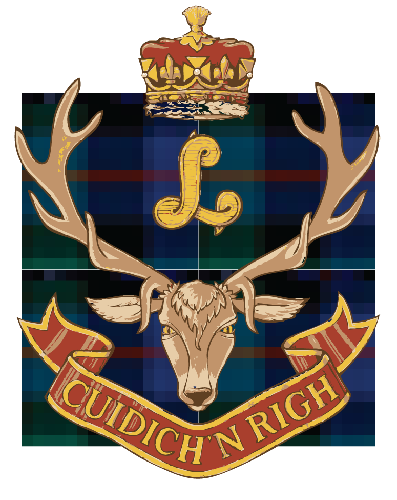A war hero in the family
By DAN FERGUSON
March 28, 2017 · Updated 2:29 PM
Carol Madill didn’t know much about her grandfather, George Soles.
“I knew he was a provincial policeman. He’d had a heart attack and died young,” Madill said.
The Langley resident also knew that Soles had served during the First World War, but wasn’t aware of the details until her daughter, Kristina Vallance, was assigned to do a report on her family history for high school.
After talking to her grandmother, Grace, Kristina did an internet search for information about Soles and it was then she learned that her great-grandfather was a member of the legendary Seaforth Highlandersregiment during the First World War and the only Canadian to have won the Distinguished Conduct Medal (D.C.M.) three times.
Grace had his medals, mounted in a frame.
Madill, the operations manager at the Langley airport, took a photo of the medals and showed it to George Miller, the then-manager of the Langley airport, a former fighter pilot who immediately recognized the significance of the D.C.M. with the red and blue ribbon and two silver bars attached.
“It’s an extremely important medal,” Miller said.
The D.C.M. for distinguished conduct in the field was the second highest award for gallantry in action for British Commonwealth soldiers, after the Victoria Cross.
Miller phoned Honorary Lieutenant Colonel Rod Hoffmeister of the Seaforth Highlanders to let him know Soles’ medals had been located and the family wanted to donate them to the regiment.
Brigadier General John Arthur Clark, CMG, DSO & Two Bars, QC (8 June 1886 – 18 January 1976) was the Commanding Officer of the 72nd Battalion (Seaforth Highlanders of Canada) for most of the Battalion’s service during the First World War.
The medals were formally handed over during a regimental ceremony in Vancouver in 2014.
“We were thrilled,” Hoffmeister said.
Hoffmeister said it wasn’t unusual for families of veterans to know little about their wartime experience.
“Very few veterans of WW1 and WW2 talked about it.”
During one interview with Soles about the war, he described how he ended up taking 43 Germans prisoner shortly after he was wounded in the head and knocked unconscious.
After he came to, Soles dumped all his gear and was walking through a bullet-riddled French village to get medical treatment when he spotted a German sentry standing at the entrance of a deep dug-out.
“I had to pass him, but I didn’t have a rifle. I scouted back a few yards, found an abandoned German rifle, and sneaked back, put it against the German’s back and said ‘Hands up.’ He couldn’t understand English but he knew the feel of cold steel. He dropped his rifle and elevated.”
Using hand signals, Soles got the German to say how many soldiers were in the dug-out.
“He put up eight fingers and two thumbs, four times, closed both hands and then held up two fingers. Forty-three, including the sentry.
“I thought well, I might as well take them along … ”
Soles pointed to a box of hand grenades near the entrance and motioned for the German to tell his comrades to come out, or else.
“And he understood. He yelled something in German; I guess it meant come up and give up. Anyway, up came 42 Germans, unarmed and with their hands in the air … I took them along and later was awarded the D.C.M.
“That’s all there was to it.”
Soles was initially a member of the Third Canadian Pioneer Battalion that fought in the battles of the Somme and Vimy Ridge.
After Soles was wounded in action in fighting at Vimy in 1917 — while he was recovering in England — the battalion was broken up to provide reinforcements to other Canadian units in the field.
The victory at Vimy Ridge, the first time all four Canadian Infantry Divisions of the Canadian Corps fought together, had been costly.
Canadians suffered a total of 10,602 casualties, 3,598 men killed and 7,004 wounded.
As a new member of the Seaforth Highlanders, Soles won his first D.C.M. at Passchendaele.
When an officer called for volunteers to bomb some German machine gunners, Soles raised his hand.
Warned he wouldn’t be able to get through a swamp to get around the machine gun nests, Soles reportedly replied, “It couldn’t be anything as bad as duck hunting in British Columbia,” and slogged through the supposedly impassible terrain with another man, then attacked the machine gunners with a bomb, killing eight and taking 18 prisoner.
His second D.C.M. was earned during what would now be called a “friendly fire” incident at the Battle of Amiens when a confused British tank started shooting at the Canadians.
Soles put a steel helmet on his bayonet and advanced on the tank despite taking heavy fire, and managed to get them to stop.
Soles earned his third D.C.M. leading his ‘A’ Company, as it fought to secure the French hamlet of Sancourt.
The official account, published in the London Gazette, said Soles “rushed an enemy strong-point single-handed, accounting for the garrison and capturing three machine guns. Later, he worked his way along a railway cutting, and personally shot eight of the enemy.”
Of the 120 men in A company only 17 men and Soles survived the battle.
Five weeks later, on Nov. 11 the armistice was signed.
Soles was recovering in hospital from the wounds he suffered while earning his third D.C.M.
On April 9, Madill and her daughter will attend the ceremonies at the Vimy Ridge memorial in France to mark the 100th anniversary of the battle.
The following day, they plan to take an all-day tour of the battlefield where George Soles and many other Canadian soldiers fought.


